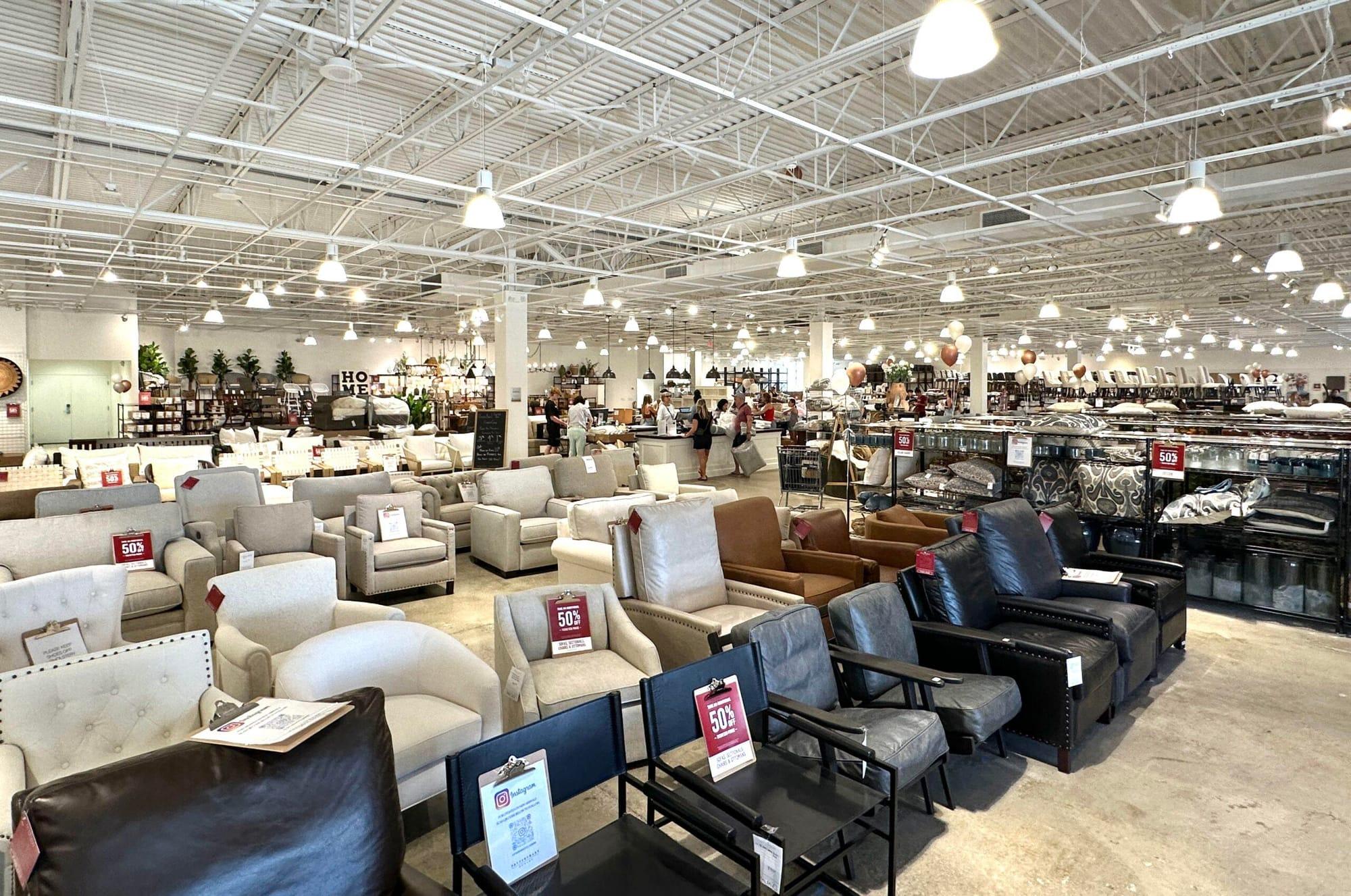Home Affordability 101: How Much House Can You Buy or Rent, and What to Spend on Furniture
Learn how to budget for housing and furniture with tips on affordability, the 28/36 rule, and furnishing on a budget. Discover room-by-room breakdowns, savings tips, and how to balance spending for a stylish yet financially sustainable home.

Photo by Tierra Mallorca / Unsplash
Buying or renting a home is a major step, but it’s just the beginning. After you’ve sorted out your housing costs, the next challenge is furnishing and decorating your space in a way that feels both comfortable and financially responsible. Striking the right balance between housing costs and your furniture budget is crucial for long-term financial stability and creating a home you genuinely enjoy.
In this guide, we’ll answer two key questions:
- How much house can I afford?
- How much should I spend on furniture and home decor?
Part 1: How Much House Can I Afford?
Key Factors That Determine Housing Affordability
- Income: Your household income sets the foundation of your budget.
- Debt-to-Income (DTI) Ratio (The 28/36 Rule):
- Spend no more than 28% of your gross monthly income on housing (rent or mortgage, taxes, insurance).
- Keep total debts—housing, credit cards, car loans—under 36% of your gross monthly income.
Example: If you earn $5,000 per month, aim for housing costs around $1,400. If you have $500 in other debt, you stay within the 36% total debt limit.
- Savings and Down Payment: A 20% down payment for buyers helps you avoid private mortgage insurance (PMI). But FHA loans may require as little as 3.5%, and VA loans can sometimes require no down payment at all.
- Unexpected Expenses: Keep at least three months of housing payments in savings as a financial cushion.
Renting vs. Buying: Key Differences in Affordability
- For Renters:
Limit rent to about 30% of gross monthly income. Don’t forget to include renter’s insurance and utilities. - For Buyers:
Consider PITI (Principal, Interest, Taxes, and Insurance) when calculating your monthly mortgage.
Use online home affordability calculators and reliable external resources (e.g., HUD.gov or trusted personal finance blogs) to estimate monthly costs.
Special Cases
- FHA and VA Loans:
FHA loans have relaxed credit requirements and low down payments.
VA loans often require no down payment for eligible military members and veterans. - High-Cost Areas:
In expensive cities, consider “house hacking”—like renting out a portion of your property—or explore smaller homes or condos that better fit your budget.
Practical Tips for Housing Affordability
- Don’t stretch your budget just because a lender approves you for a higher amount.
- Factor in lifestyle priorities: commute times, proximity to schools, parks, and amenities.
Part 2: Determining Your Furniture and Decor Budget
How Much Should I Spend on Furniture and Home Decor?
A helpful rule of thumb is to spend about 10–20% of your home’s value on furniture and decor. For a $300,000 home, a $30,000–$60,000 furniture budget can be reasonable. Renters can scale this down since their stay might be shorter, focusing on versatility and portability.
Room-by-Room Budget Breakdown
- Living Room (35% of your furniture budget):
Invest in a quality sofa, durable coffee table, and good lighting. - Bedroom (20% of your furniture budget):
A high-quality mattress and supportive bed frame are essential. - Kitchen/Dining (15% of your furniture budget):
Consider multifunctional pieces, especially if space is limited. - Other Spaces (30% of your furniture budget):
This can include a home office, guest room, or outdoor patio furniture.
Renters vs. Buyers: Spending Differences
- Renters:
Prioritize multipurpose furniture and pieces that are easy to move. Keep the budget lean and flexible. - Buyers:
Invest in durable, long-lasting pieces that can evolve with your home over time.
Ways to Save on Furniture and Decor
- Shop Secondhand: Check out thrift stores, estate sales, or online marketplaces.
- Watch for Sales: Leverage deals like Black Friday, holiday weekends, or end-of-season clearance events.
- Use Furniture Price Comparison Tools: Platforms like Spoken.io can help you find the best deals quickly.
- Renting Furniture: As a short-term solution, renting can help you avoid large up-front costs.
Part 3: Balancing Housing and Furnishing Costs
Avoid Overcommitting on Housing
If you overspend on your home purchase or rent, you’ll have less flexibility in your furniture budget. Strive for a balanced approach so you can afford to make your home both functional and stylish.
Aligning Spending with Your Lifestyle
- Minimalists:
Stick to essentials and avoid clutter. Focus on quality over quantity. - Maximalists:
Plan to add more decorative elements gradually. Spread out purchases over time to avoid financial strain.
Build Your Home Over Time
You don’t need to furnish every room at once. Start with high-use areas (like the bedroom and living room) and add pieces as your budget allows. This approach also lets you refine your style over time and avoid impulsive purchases.
Case Studies to Inspire You
- Case Study: Young Professional Renter
Anna moves into a small city apartment. She keeps her rent at 25% of her income, leaving room in her budget for a quality sofa-bed and a compact dining set—pieces that serve multiple functions in a limited space. - Case Study: First-Time Homebuyer Family
The Johnsons buy a starter home with a moderate mortgage that’s below the 28% threshold. This allows them to invest gradually in solid, long-lasting furniture, adding a few new pieces each year without feeling financially stressed.
Conclusion and Next Steps
Finding the right balance between what you spend on housing and how much you invest in furniture and decor ensures a comfortable, financially sustainable living environment. Use affordability calculators, follow the 28/36 rule, and allocate around 10–20% of your home’s value to furnishing. Consider using comparison tools like Spoken.io to find the best deals, and furnish your home over time to achieve a look that truly reflects your personality.
Ready to make your dream home a reality? Explore Spoken.io to compare prices, discover sales, and save on the perfect pieces for your new space. Consider subscribing to our newsletter or following us on social media for more tips on budgeting, home decor, and smart furniture shopping.
By carefully planning your housing budget and furniture spending, you can create a home that’s both stylish and financially sound—one step at a time.
Quick facts
Is $5000 enough to furnish an apartment?
For a basic apartment setup with mid-range furniture, $5,000 can cover essential pieces like a sofa, bed, dining table, and some decor. Opt for budget-friendly retailers or consider secondhand items to stretch your dollars.
What is a reasonable budget for furniture?
A common guideline is to allocate 10–20% of your home's value to furnishings. For renters or smaller spaces, focusing on key items often means budgeting anywhere from $5,000 to $10,000, depending on quality and style preferences.
How much does it cost to furnish a 2000 sq ft house?
Furnishing a 2,000 sq ft home can range widely, but using the 10–20% guideline on a $300,000 home suggests $30,000–$60,000. This depends on whether you opt for budget-friendly pieces, high-end items, or a mix of both.
How much should I expect to pay for furniture?
Costs vary by room size, quality, and style. A single room might cost $2,000–$5,000, while furnishing an entire home can range from a few thousand for basics to tens of thousands for premium, long-lasting collections.
How much does a person spend on furniture per month?
If you spread out your purchases or use financing, a few hundred dollars per month can gradually cover necessities. The exact amount depends on your total budget, payment plans, and how quickly you want to furnish your space.
Is it better to pay monthly for furniture?
Paying monthly can make furniture more affordable upfront, but watch out for interest and fees. If possible, pay cash or find zero-interest plans to save money in the long run.
Will financing furniture hurt your credit?
Financing furniture can affect your credit. Opening a new account may lower your score slightly, and missed payments can harm it more. On-time payments, however, can help build a positive credit history.
Is it worth spending a lot on a couch?
A quality couch provides durability, comfort, and lasting style. If you use it frequently, investing more can pay off over time in terms of comfort and the couch’s lifespan.
Is $10,000 a lot for a couch?
$10,000 is high-end for a sofa. While luxury pieces exist at this price, many sturdy, comfortable options are available for considerably less, often under a few thousand dollars.
Why may your $3000 couch be garbage in 3 years?
Poor craftsmanship, low-quality materials, or inadequate care can cause a $3,000 couch to wear out quickly. When shopping, look for solid frames, durable fabrics, and reputable manufacturers.
Is $2000 too much for a sofa?
$2,000 can secure a mid- to high-quality sofa. Whether it’s too much depends on your budget, the sofa’s construction, and brand. Compare prices and read reviews to ensure value.
How long does the average American keep a couch?
A well-made sofa can last 7–15 years, depending on quality, usage, and maintenance. Regular cleaning, rotating cushions, and treating stains promptly can extend its life.
What is the average cost of a lovesac?
Lovesac prices vary. Smaller sacs start at a few hundred dollars, while larger, customizable setups can exceed $1,000. Fabrics, covers, and accessories influence final costs.
What is the most popular couch size?
A standard three-seat sofa, around 84 inches wide, is popular due to its versatility. It fits many living spaces and accommodates families and guests comfortably.
What salary to afford a $400,000 house?
Typically, an income of $80,000–$100,000 per year may suffice, assuming a moderate down payment and manageable debts. Keep housing costs under 28% of your gross income.
Can I afford a 300k house on a 70k salary?
It’s possible. With low debts, a decent down payment, and favorable interest rates, a $70,000 salary can often handle a $300,000 home within the 28/36 rule.
How much house can I afford based on my salary?
Use the 28/36 rule: spend no more than 28% of gross income on housing and keep total debts under 36%. Online calculators and lender pre-approvals can help refine this estimate.
How much income do I need to make to afford a $300000 house?
An income of about $60,000–$75,000 annually is often enough, assuming a moderate down payment, low debts, and a favorable mortgage rate.
Can I buy a 300K house with 60k salary?
It may be challenging but not impossible. Lower interest rates, minimal debt, and assistance programs can make a $300,000 home achievable on a $60,000 salary.
Can I afford a 500k house on 100k salary?
If your debts are low and you have a solid down payment, yes. Aim to keep monthly mortgage costs under 28% of your gross income—around $2,300–$2,400 per month.
What salary do you need for a 350k house?
Depending on interest rates and other factors, an income of roughly $70,000–$85,000 per year may suffice. Verify with affordability calculators and lenders for precise estimates.
Is 300K a good salary for a single person?
$300,000 is considered a high income in most regions. It generally provides a comfortable lifestyle with substantial home-buying power, assuming responsible money management.
How rare is a 300k salary?
A $300,000 salary is relatively uncommon and places the earner well above the median income in most areas, making it a top-tier income.
Is 200k a year middle class?
$200,000 annually typically exceeds the U.S. median household income, often placing earners in an upper-middle-class or affluent category, depending on the region.
What percent of single people make 100k?
Percentages vary by location and demographics, but a relatively small portion of single earners reach six-figure incomes compared to married or dual-income households.
How much is a 20% downpayment on a $350 000 house?
20% of $350,000 is $70,000. Saving this amount helps you avoid private mortgage insurance (PMI) and reduce your monthly mortgage payments.
What is the 28/36 rule?
The 28/36 rule states that you should spend no more than 28% of your gross monthly income on housing and keep total debts under 36%. It’s a common guideline for affordability.
What is the 28/36 rule and how does it affect home affordability?
The 28/36 rule suggests spending no more than 28% of your gross income on housing costs and keeping total debts under 36%. Adhering to this guideline ensures you’re not overextending financially, maintaining a comfortable balance between housing expenses and other financial goals.
Should I follow the 10–20% guideline for furnishing my home?
Allocating 10–20% of your home’s value for furniture and decor is a common rule of thumb. While it’s flexible, it offers a starting point to guide your spending. Homeowners may invest more in durable pieces, while renters might spend less on non-permanent items.
How does renting differ from buying when budgeting for furniture?
Renters often focus on versatile, budget-friendly pieces that are easy to relocate, while buyers may invest more in long-lasting, high-quality furniture. The commitment level and intended length of stay influence how much you spend and what you choose to buy.
What are some strategies to save money when buying furniture?
Shopping secondhand, waiting for sales, using outlet stores, and employing price comparison tools can help you find quality furniture at lower prices. Renting furniture temporarily or buying multifunctional pieces are also cost-effective approaches.
How can I furnish my home gradually to avoid financial strain?
Start by investing in essential, frequently used items like a bed or sofa, then add decor and additional pieces over time. This approach spreads out costs, prevents impulse buys, and allows you to adjust as your style and needs evolve.
What is house hacking, and how can it improve affordability?
House hacking involves leveraging your property to generate income—such as renting out a spare room or a separate unit. This strategy can offset mortgage or rent costs, making homeownership more affordable and freeing up funds for other priorities.
How do minimalists and maximalists differ in their furniture spending?
Minimalists focus on essentials and invest in fewer, high-quality items, reducing clutter and spending less overall. Maximalists may incorporate more decorative elements, spreading purchases out over time to manage costs without sacrificing personal style.
Why is having three months of housing payments in savings important?
Keeping three months of housing costs in reserves provides a financial safety net. It ensures you can handle unexpected job loss, medical bills, or home repairs without falling behind on housing payments or straining your budget.
How can I avoid overcommitting on housing costs?
Stick to affordability guidelines like the 28/36 rule, factor in all housing-related expenses, and don’t borrow the maximum amount a lender offers. Considering your lifestyle, commute, and personal savings goals helps you choose a home that won’t stretch your finances.
Why should I consider lifestyle factors when choosing a home?
Lifestyle factors like commute time, proximity to amenities, and neighborhood quality influence your day-to-day satisfaction. Balancing housing costs with these elements ensures you enjoy your home, reducing the likelihood of expensive moves or redecorating later.

Geoff Abraham
Co-founder & President of Spoken
Geoff is the co-founder and President of Spoken. He is a Dad. He holds a BA from UT Austin (Plan II) and an MBA from Stanford. Geoff has built several successful businesses, including a bicycle taxi business in San Francisco which he ran for 10 years with his wife, Mimosa. He is an executive coach, and he actively invests in seed-stage startups via The Explorer Fund.
Read more

